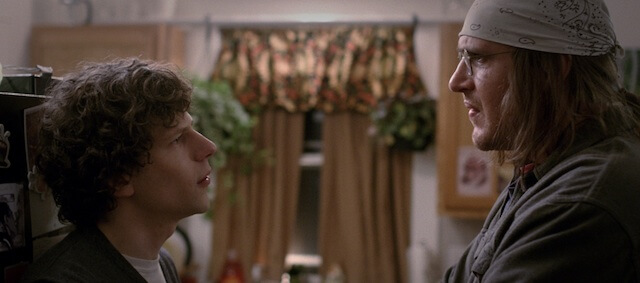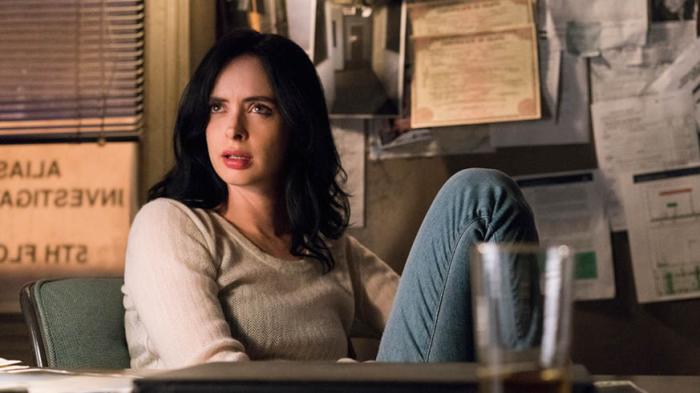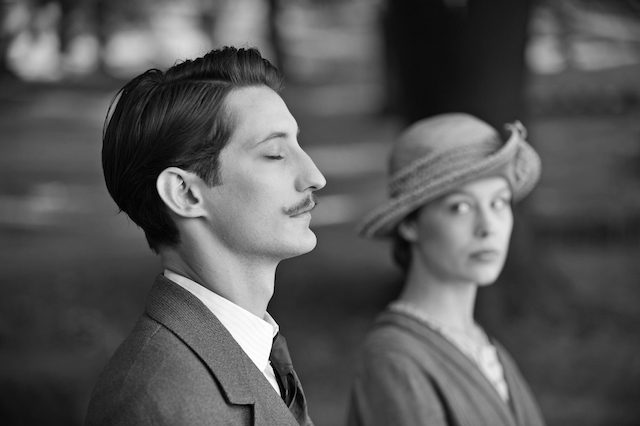‘The End of the Tour’ As thoughtfully made and gracefully acted as it is, there’s something unclean about “The End of the Tour.” Concerning a figure, late author David Foster Wallace, who likely would have found being the focus of a film icky and created against the wishes of his Trust, it threatens to be mere grave-robbing, pitching viewers a movie version of a complex and private titan. However accurate it is — and some of those who knew him, like the critic Glenn Kenny, say it misrepresents him — getting something out of it requires divorcing one’s self from the truth. One must treat its version of Wallace as a character inspired by the real deal — a creation of actor Jason Segel. For what it’s worth, the discomfort of representing someone is the film’s main beef. Culled from David Lipsky’s book “Although of Course You End Up Becoming Yourself,” which regurgitated a handful of days the journo/author spent with him for an aborted Rolling Stone piece, the film frontloads what appear to be its own anxieties. Lipsky (Jesse Eisenberg) shows up in Wallace’s middle-of-nowhere, snowcaked Illinois home with an agenda: profile the hot new literary rock star, right after the release of his 1996 doorstop “Infinite Jest,” but also grill him for details about his turbulent past. Cold and intimidating during their first phone convo, Wallace proves to be gregarious and open in person. He offers Lipsky his spare bedroom and soon confesses that he wants Lipsky to like him. Vice versa. RELATED: Jesse Eisenberg discusses “The End of the Tour” and what it’s like to be interviewed “The End of the Tour” is in essence a talking picture — a “My Dinner with Andre” or one of the “Sunset” movies, albeit in various locations over days and with more of a traditional arc. But most of it is about conversation, arranged by director James Ponsoldt (“The Spectacular Now”) as a series of deceptively plain long takes and shot-reverse shots. We get lost in talk, as do Wallace and Lipsky, who seem to forget that they’re essentially collaborating on a piece, even addressing it in a way that bonds them in mutual unease. The job aspect is always in the back of their minds, coating their interactions in professionalism. They go from awkward strangers to new buds to, eventually, somewhere more complex, especially once first blush fades and their neuroses start poking out. But for most of its length it’s a movie about not having any drive, about not wanting to do anything but talk. Lipsky comes off worse than Wallace, who doesn’t come off terribly at all. Lipsky is quick to inform an author already certified as a genius that he wrote a novel too, one that instantly plummeted into oblivion. He’s not always driven by jealousy, but he is peeved that Wallace insists he’s just some guy, with big dogs and not enough friends, who likes binging crappy TV and can sometimes hang with people without disappearing too deep into his head. Behind his back Lipsky sneaks a peak at his gracious host’s medicine cabinet and chastises his girlfriend (Anna Chlumsky) after she spends too much time with Wallace on the phone. And on top of that he’s played by Jesse Eisenberg at his most passive-aggressive and wormiest — a guy who thinks his shyness excuses his mendacity. RELATED: Stream This: Dan Stevens kills it in “The Guest,” now on Netflix Instant Segel’s Wallace is more private, albeit the kind of private who keeps blurting out his anxieties, in an attempt to make a connection with someone who may share them. Segel isn’t just Going Serious; he’s trying to disappear into someone else. Segel speaks most of his lines with a disarmingly warm smirk, one that assumes you’re on the same wavelength, and a sotto that seems consciously reined-in — as though he was policing every last syllable. If he’s not Wallace himself — and by some accounts it’s not — then he’s nonetheless a vivid character, one who rejects being pigeonholed into a brilliant writer or a tortured artist. Segel’s Wallace is too real to be a literary god, whoever he is. But again, this film isn’t really about him. It is about the fear of getting him wrong, as well as Wallace’s own fear of seeing himself reflected, publicly, though another’s eyes. He tells Lipsky he wishes he could “shape the impression” he has. That doesn’t excuse its own portrayal of Wallace, but it still brings the subject up. And it gets the nebulous relationship between journalist and subject — that need for the former to be liked, the fear the latter has of being viewed through another’s eyes. The film itself acknowledges that the way we’re seen and the way we see ourselves will never line up, be it a close, personal relationship or an article written by a stranger. It’s a film that doesn’t entirely overcome its own dodgy conception but does offer something worthwhile and important. Follow Matt Prigge on Twitter@mattprigge
Director: James Ponsoldt
Stars: Jason Segel, Jesse Eisenberg
Rating: R
4 (out of 5) Globes
‘The End of the Tour’ is more about journalism than David Foster Wallace

A24


















